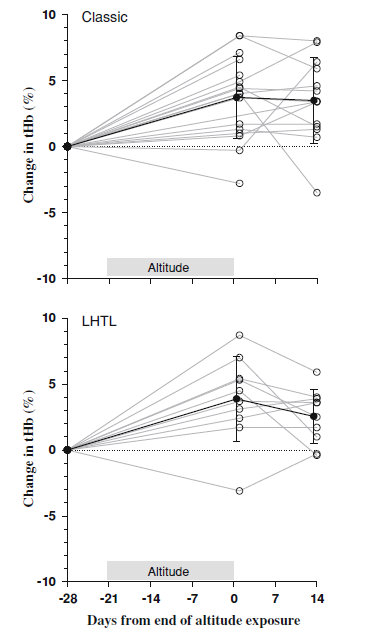THANK YOU FOR VISITING SWEATSCIENCE.COM!
As of September 2017, new Sweat Science columns are being published at www.outsideonline.com/sweatscience. Check out my bestselling new book on the science of endurance, ENDURE: Mind, Body, and the Curiously Elastic Limits of Human Performance, published in February 2018 with a foreword by Malcolm Gladwell.
- Alex Hutchinson (@sweatscience)
***
Back in 2010, researchers at Florida State published a study showing that trained distance runner became about 5% less efficient and covered 3% less distance in a time trial if they did static stretching before the run. This was significant because, after a long series of studies showing that stretching compromises strength and power, it was one of the first to look at endurance performance.
Now the same researchers have published another study, in the current issue of Journal of Strength & Conditioning Research, this time looking at “dynamic” stretching instead of static stretching. Other than the stretching routine, the protocol is exactly the same. The runners spend 15 minutes stretching (or sitting quietly, during the control condition), then run for 30 minutes at 65% VO2max for a running economy measurement, then run as far as they can in the next 30 minutes.
This time, stretching had no significant effect on the distance covered in the time trial: stretchers covered 6.1 +/- 1.3 km, non-stretchers covered 6.3 +/- 1.1 km. On the other hand, the dynamic stretching did increase range of motion in the sit-and-reach test just as much as static stretching (from 32.3 to 37.6 cm). So the basic conclusion: if you’re really into stretching before a run, dynamic stretching will allow you to work on your flexibility without hurting your running performance.
One subtlety, which you pick up if you look at the individual results:

The dynamic warm-up routine takes a fair amount of energy (more details on that below). So you might wonder: for the less fit runners in the group, is it possible that they’re just tired out? The researchers do allude to this possibility:
[I]t is interesting to note that our top 2 performance runners both increased their performance under the dynamic stretching condition with the top runner seeing the largest increase in distance covered in the dynamic stretching condition of 0.2 km. Furthermore, the 2 runners in our study who covered the shortest distance performed better during the nonstretching control condition with the worst performance runner seeing the largest decline in performance after the stretching condition (i.e., 0.6 km). It is possible that elite endurance runners need a warm-up protocol of greater intensity and duration than do recreationally trained runners.
Looking back at the data, it actually looks to me like the top runner was better in the non-stretching condition, but maybe that’s just an artifact of the line thickness they used in the graph. Either way, the differences are pretty small in all cases. To me, the moral of the story is: if you’re an endurance athlete, you may have many reasons for why and how you stretch, but “going faster” shouldn’t be one of them.
As an addendum, here’s the stretching routine the study used:
A total of 10 different movements were used and completed in 15 minutes by performing 2 sets of 4 repetitions of each movement. The dynamic stretching movements were performed in the following order:
(a) Toe and Heel Walks: In these exercises, the subjects walked on their toes for 4 steps followed by walking on their heels for 4 steps to stretch the entire calf complex.
(b) Hip Series: The subjects performed a dynamic stretch of the hip flexors and extensors by placing their hands on a wall with their arms fully extended so that their body was at a 45� angle. In this position, each subject lifted his leg off the ground while bringing the knee to the chest and stepping over a hurdle placed laterally before returning to the starting position.
(c) Hand Walks: The subjects stretched their calves and hamstrings by beginning in a pushup position and walking their feet as close to their hands while keeping their heels flat. As soon as the subjects’ heels came off the ground, they �walked� with their hands back to a pushup position.
After the hand walks, the subjects performed a series of walking lunges, including (d) rear lunges, (e) lateral lunges, (f ) forward lunges, (g) a knee pull to a lunge, and (h) an ankle pull to a lunge to focus on the quadriceps and gluteus maximus.
(i) Walking Groiners: The subjects began this movement in a pushup position and then brought 1 foot next to the same side hand as to perform a groiner. Instead of holding this position, the subjects �walked� their hands out to return to the starting position before performing the action on the opposite leg.
(j) Frankensteins: The subjects stood with their feet together and their arms extended straight out in front of them so that their arms were parallel to the ground. While walking, the subjects were instructed to kick 1 leg up to touch the opposite hand to focus on the hamstrings. Every time a step was taken, a kick was made.






